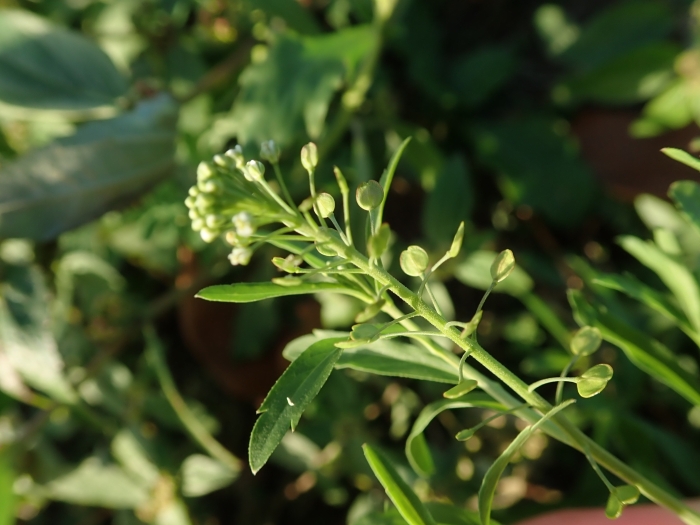Virginia Pepperweed
(Lepidium virginicum)
Virginia Pepperweed (Lepidium virginicum)
/
/

Daniel Cahen
CC BY 4.0
Image By:
Daniel Cahen
Recorded By:
Copyright:
CC BY 4.0
Copyright Notice:
Photo by: Daniel Cahen | License Type: CC BY 4.0 | License URL: http://creativecommons.org/licenses/by/4.0/ | Rights Holder: Daniel Cahen | Publisher: iNaturalist | Date Created: 2020-02-09T22:38:18-08:00 |



















Estimated Native Range
Summary
Lepidium virginicum, commonly known as Virginia pepperweed or least pepperwort, is an herbaceous annual or biennial plant. It is native to a variety of habitats including open woodlands, fields, and disturbed areas across much of North America, from the United States and southern Canada to Mexico. Virginia pepperweed typically grows to a height of 10-50 cm and is characterized by its small, white flowers that bloom from May to September. The flowers are clustered at the top of the stem in a raceme, and though not particularly showy, they can add a delicate texture to garden settings. The plant also produces flat, round seed pods that are notable for their peppery taste.
Virginia pepperweed is known for its hardiness and ability to thrive in poor, dry soils, making it a low-maintenance option for gardeners. It is often used in wildflower meadows, as a filler in borders, or for naturalistic plantings. In cultivation, it requires full sun and well-drained soil. While it can be an aggressive self-seeder, this characteristic also makes it easy to propagate. It is sometimes grown for its edible leaves and seeds, which have a peppery flavor and can be used in salads or as a spice. However, gardeners should be cautious, as it can become weedy and potentially invasive outside its native range.CC BY-SA 4.0
Virginia pepperweed is known for its hardiness and ability to thrive in poor, dry soils, making it a low-maintenance option for gardeners. It is often used in wildflower meadows, as a filler in borders, or for naturalistic plantings. In cultivation, it requires full sun and well-drained soil. While it can be an aggressive self-seeder, this characteristic also makes it easy to propagate. It is sometimes grown for its edible leaves and seeds, which have a peppery flavor and can be used in salads or as a spice. However, gardeners should be cautious, as it can become weedy and potentially invasive outside its native range.CC BY-SA 4.0
Plant Description
- Plant Type: Herb
- Height: 0.25-1.1 feet
- Width: 0.5-0.75 feet
- Growth Rate: Rapid
- Flower Color: White
- Flowering Season: Spring, Summer, Fall
- Leaf Retention: Deciduous
Growth Requirements
- Sun: Full Sun
- Water: Low, Medium
- Drainage: Fast, Medium, Slow
Common Uses
Edible*Disclaimer: Easyscape's listed plant edibility is for informational use. Always verify the safety and proper identification of any plant before consumption., Low Maintenance
Natural Habitat
native to a variety of habitats including open woodlands, fields, and disturbed areas across much of North America, from the United States and southern Canada to Mexico
Other Names
Common Names: Virginia Pepperweed, Wild Peppergrass, Peppergrass, Poor-Man’s-Pepper, Poorman Pepperweed
Scientific Names: , Lepidium virginicum, Conocardamum virginicum, Crucifera virginica, Dileptium praecox, Dileptium virginicum, Discovium gracile, Discovium ohiotense, Iberis virginica, Iberis virginica
GBIF Accepted Name: